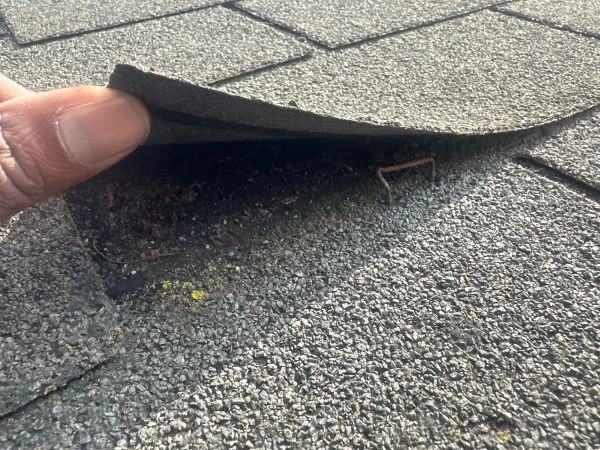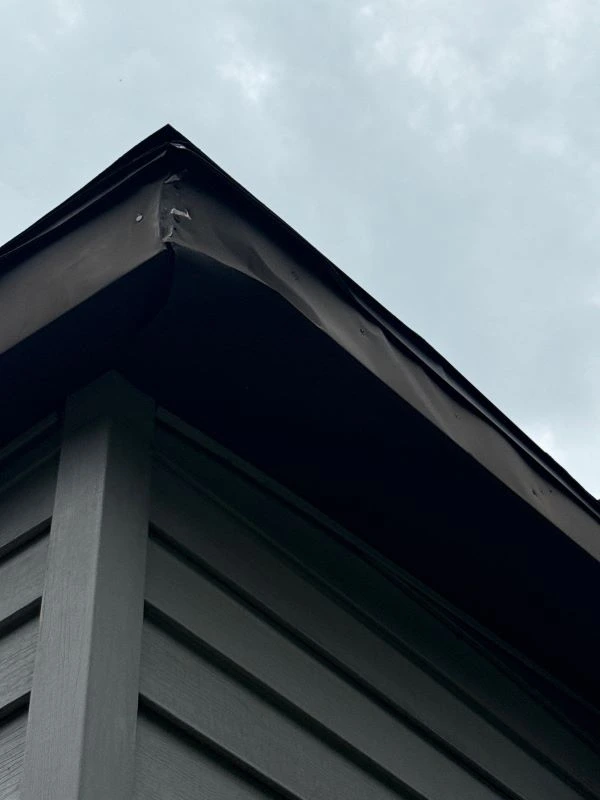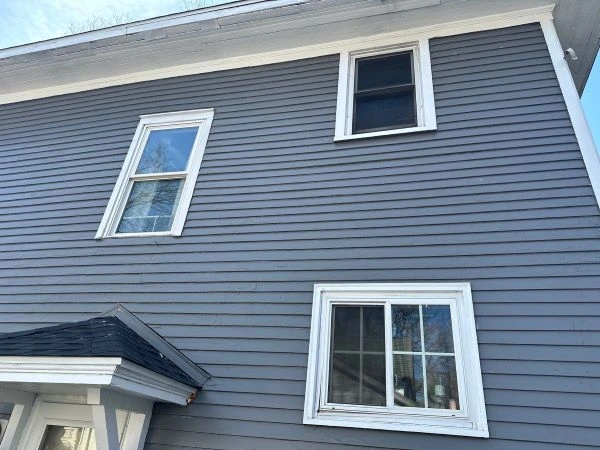Roof Repair vs Roof Replacement: Choosing the Best Option for Your Home
When it comes to protecting your home, few components are as essential as your roof. A sturdy, well-maintained roof not only shields you from harsh weather but also adds to your property’s curb appeal and overall value. At Worthy Construction LLC, we know homeowners often face a critical decision: roof repair or roof replacement. This guide will help you understand the differences, recognize the signs, and make the right choice for your home. Whether you’re dealing with minor leaks or extensive storm damage, our expertise in roof repair and roof replacement ensures your home remains safe and secure.

Understanding the Difference: Roof Repair vs. Roof Replacement
Roof repair involves fixing specific issues, such as damaged shingles, minor leaks, or flashing problems. It’s often the best choice for younger roofs with localized damage. Roof replacement, on the other hand, means removing the old roofing materials and installing a completely new roof. This option is ideal when your roof has widespread damage or has reached the end of its life expectancy.
Signs You May Need Roof Repair
- Missing or Damaged Shingles
If you notice curled, cracked, or missing shingles after a storm, a repair might be all you need. Left unchecked, however, these areas can allow water to infiltrate your roof decking. - Small, Isolated Leaks
Leaks in a specific spot—often around vents, chimneys, or skylights—can usually be repaired without replacing the entire roof. - Granule Loss in Gutters
Asphalt shingles shed granules over time. A few granules in the gutter is normal, but excessive amounts in a short period could mean you need a repair. - Minor Flashing Damage
Damaged or corroded flashing around chimneys and roof edges can often be replaced without re-roofing. - Localized Water Stains on Ceilings
One or two small water stains indoors may point to a localized problem that can be patched quickly.
Signs You May Need Roof Replacement
- Roof Age
Most asphalt shingle roofs last 20–25 years. If your roof is nearing or past this age, replacement is often the best long-term solution. - Widespread Shingle Damage
Missing shingles in multiple areas, cracked shingles throughout, or severe curling are clear signs of structural wear. - Multiple or Recurring Leaks
If repairs are becoming frequent, the underlying structure may be compromised, making replacement more cost-effective. - Sagging Roof Deck
A sagging roof signals possible rot or damage to the decking, which typically requires a full replacement. - Severe Storm Damage
Large-scale hail or wind damage that affects more than one area of your roof is often best addressed with a replacement.
Factors to Consider When Deciding
- Cost vs. Long-Term Value – Repairs are cheaper initially but may cost more if frequent. Replacements are a larger upfront investment but offer decades of protection.
- Roof Age and Material – A newer roof with minor damage is a repair candidate. An older roof past its prime benefits more from replacement.
- Extent of Damage – Small, localized damage favors repairs; large, systemic issues demand replacement.
- Energy Efficiency – A new roof can improve insulation and reduce energy bills, making replacement appealing for older homes.
DIY Roof Repair: When Is It Safe?
While professional roof service is always recommended for safety and warranty reasons, some minor DIY maintenance tasks are safe for experienced homeowners:
- Replacing a Few Shingles – If you’re confident working on a ladder, you can replace a few damaged shingles using roofing nails and sealant.
- Cleaning Gutters – Keeping gutters free of debris helps prevent water damage and roof leaks.
- Trimming Overhanging Branches – Reducing contact between tree branches and the roof prevents shingle damage.
- Inspecting Roof After Storms – Safely viewing from the ground or with binoculars lets you catch issues early.
- Applying Roof Sealant – Small cracks in flashing or vents can sometimes be sealed temporarily
Important: DIY is only suitable for minor tasks. Major repairs and replacements should always be handled by licensed professionals for safety and durability.
How to Maintain Your Roof and Prolong Its Lifespan
- Schedule Annual Inspections – Having a professional check your roof once a year helps catch problems early.
- Clean Debris Regularly – Remove leaves, branches, and dirt from your roof and gutters to prevent water pooling.
- Address Moss and Algae Growth – Use gentle cleaning solutions to remove growth before it damages shingles.
- Check Attic Ventilation – Proper airflow prevents heat and moisture buildup, extending roof life.
Repair Minor Issues Promptly – Small problems become major if ignored. Quick fixes keep repair costs low.
The Worthy Construction LLC Advantage
As a trusted name in roof repair and roof replacement, Worthy Construction LLC offers:
- Expert Craftsmanship – Our team is trained in all roofing systems for both repairs and replacements.
- High-Quality Materials – We use top-grade shingles, flashing, and underlayment for lasting performance.
- Upfront Pricing – Transparent, accurate quotes with no surprise costs.
- Emergency Services – Rapid response to storm damage and urgent leaks.
- Comprehensive Solutions – Roofing, siding, gutters, windows, and insulation to protect your entire home.
Contact us today at (269) 207-7704, email admin@worthyroof.com, or visit worthyroof.com to schedule your free estimate.
FAQs: Roof Repair vs. Roof Replacement
1. How long does a roof repair last?
A well-done roof repair can last several years, depending on the roof’s age and condition. For newer roofs, a repair can often extend the life by 5–10 years.
2. Is roof replacement covered by insurance?
In many cases, insurance covers replacement if the damage was caused by storms, wind, or other covered events. Wear and tear from age is typically not covered.
3. Can I live in my home during roof replacement?
Yes, you can usually stay in your home during replacement, though there will be noise and some disruption for a few days.
4. What’s the best season for roof replacement?
Spring and fall offer ideal temperatures for roofing work, but emergency replacements can be done year-round.
5. How can I tell if my roof needs replacement without climbing on it?
Look for widespread shingle damage, sagging rooflines, visible daylight in your attic, or consistent leaks—these are all strong indicators.






Trustindex verifies that the original source of the review is Google. Worthy Construction just replaced my roof, skylights, and gutters. I live out of town and selling my parent's house so this company came through a personal referral. Khari and team were such a joy to work with. He answered my questions, kept me updated on progress, did everything he said he was going to do, and met all of commitments on time. It's not easy to know what's happening while living out of town and I appreciate Khari's communication skills, timeliness, and overall this has been an amazing experience! I highly recommend Worth Construction!!Trustindex verifies that the original source of the review is Google. Worthy Construction did an excellent job replacing our roof. They were very easy to work with throughout the entire process. They answered all of our questions promptly and delivered a great finished product. I’d highly recommend them for your roofing needs.Trustindex verifies that the original source of the review is Google. Very professional, great guy that will work with you. Highly recommended for sure. Mr. Worthy is very dependable! He completed our roof on time and as expected!Trustindex verifies that the original source of the review is Google. Greatest service ever! Super fast and did a fantastic job. I will definitely save them to do future jobs that need to be fixed. The greatest ever!Trustindex verifies that the original source of the review is Google. My roof was very damaged, I had a huge hole in my roof from constant tree debris and age. I didn’t have any expectations going in to the project but I was greatly impressed with the speed of service! The ten we done in 2 days! They cleaned up afterwards, the materials were great quality and . The team replaced my entire rooftop. Mr. Worthy was very respectful and responsive to my concerns regarding the project, I would certainly recommend his company to anyone looking for a new rooftop!Trustindex verifies that the original source of the review is Google. He was a pleasure to work with. They were prompt and professional the whole project. He kept me informed the whole process and his work was of the highest quality. They were very respectful of my and my neighbor's properties. I am very very happy with the work they did for me.Trustindex verifies that the original source of the review is Google. Quality work! Highly recommended!Trustindex verifies that the original source of the review is Google. I didn't have much word done, but I called after noticing a leak in my ceiling after a storm. Khari answered right away and was able to come and take a look within a couple days. He found the problem and was able to fix if with just caulking for no charge, 100% recommendTrustindex verifies that the original source of the review is Google. We had our roof and some gutters done by Worthy Construction and not only was it very timely, but they also were very friendly. We had the unfortunate experience of having to replace roof sooner than expected and they came and explained everything to us and then gave us options that really worked for us. Khari and his team did a wonderful job for us and I would recommend their service again and again. When they were working on our roof they noticed a leak in one of our gutters and replaced that as well which was very helpful!Trustindex verifies that the original source of the review is Google. I needed a roof replacement, Mr. Worthy worked with me and my insurance company from start to completion. He gave me a time frame and he stuck with it. High praise for him and his professional team.




